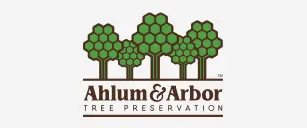During the summer months, we admire trees for their full, dark green canopies—a sign of strength, health, and beauty. But when leaves turn pale or yellow unexpectedly, it could be more than just a seasonal quirk. Your tree might be suffering from chlorosis, a condition that affects its ability to make food and stay healthy.
What Is Chlorosis?
Chlorosis is a symptom—not a disease—of an underlying issue that prevents a tree from producing enough chlorophyll, the pigment that gives leaves their green color and helps the tree convert sunlight into energy. The result? Faded, leaf chlorosis, and yellowing leaves that stand out for all the wrong reasons.
Even if your soil has plenty of iron or other nutrients, your tree may still be “starving”—because alkaline soil can lock those nutrients away, making them inaccessible to the roots. It’s like putting food in a fridge and sealing it shut. That’s why the right soil pH is just as important as the nutrients themselves.
What Causes Chlorosis?
There are several factors that can lead to chlorosis:
- Nutrient deficiency – Most commonly, trees struggle to absorb iron or manganese due to soil conditions.
- Soil pH – Alkaline soil limits a tree’s ability to absorb key nutrients—even when they’re present.
- Compacted or poorly drained soils – These prevent roots from accessing the nutrients they need.
- Root issues – Such as girdling roots, which can physically restrict nutrient and water flow.
Which Trees Are Most Susceptible?
Some species are more vulnerable than others, especially those not native to this area. If you have any of the following, be especially watchful:
- River Birch
- Pin Oak
- Red Maple
- Sweet Gum
River Birches, for example, are naturally found in acidic, moist environments—not the dry, alkaline soils common throughout much of Ohio and Kentucky. That mismatch often results in chlorosis if the soil isn’t amended or managed properly.
What Are the Signs?
Early signs of chlorosis include:
- Leaves turning yellow while the veins remain green
- Stunted growth
- Premature leaf drop
- Twig or branch dieback in severe cases
Many of our clients first call us about yellow leaves—but they’re often surprised to learn it’s a symptom of deeper root or soil issues. The good news? With early action and understanding how to treat chlorosis, most trees make a full recovery.
Catching chlorosis early not only restores your tree’s appearance; it also helps prevent long-term decline and protects your investment in your landscape.
What Can You Do?
If your tree is showing signs of chlorosis, don’t wait. Professional diagnosis is essential. Treatments vary depending on the cause but may include:
- Soil amendments to correct pH
- Deep root fertilization
- Iron injections
- Root collar excavation (for girdling roots)
At Ahlum & Arbor, our Certified Arborists specialize in identifying and treating tree health issues like chlorosis. We take a tailored approach to help your trees recover and thrive for seasons to come.
Want to Learn More?
For a deeper dive, check out our Chlorosis Fact Sheet. Or better yet—schedule a consultation and let our experts evaluate your tree in person.

